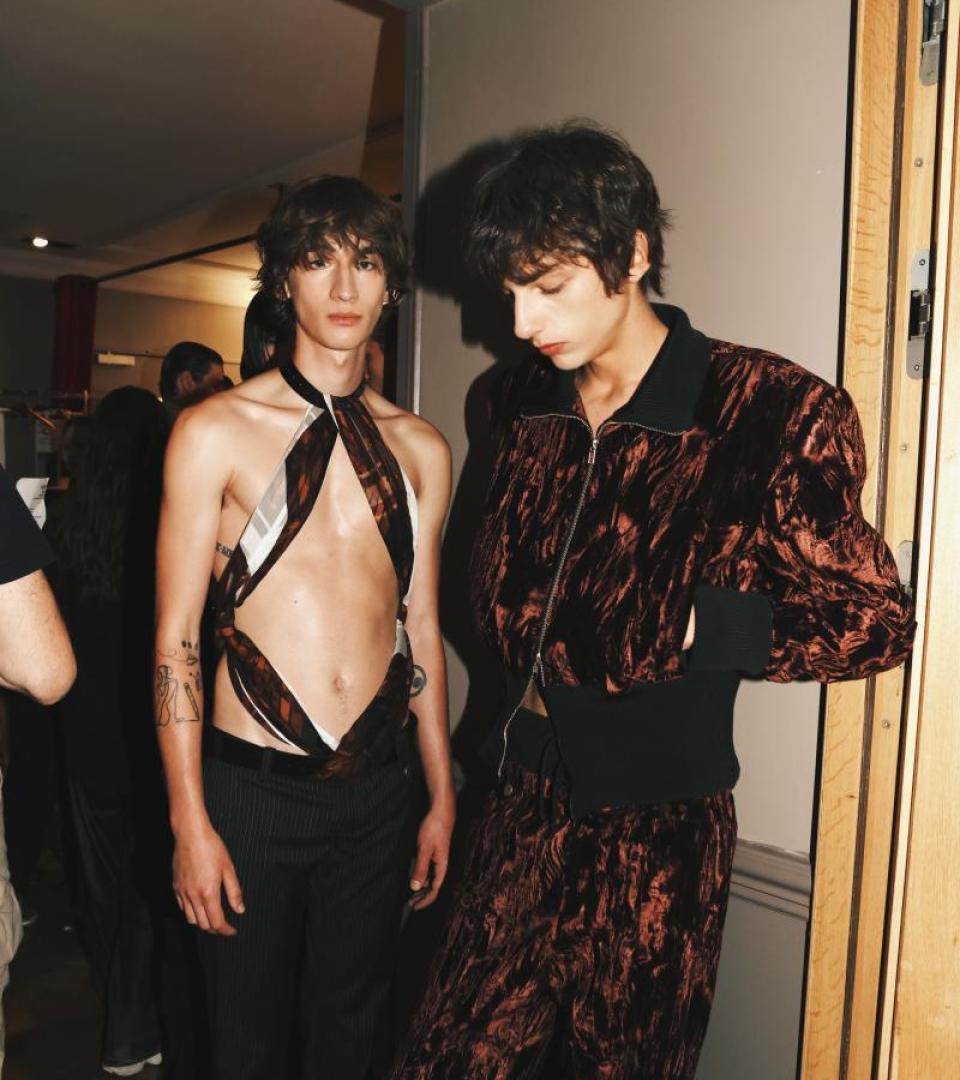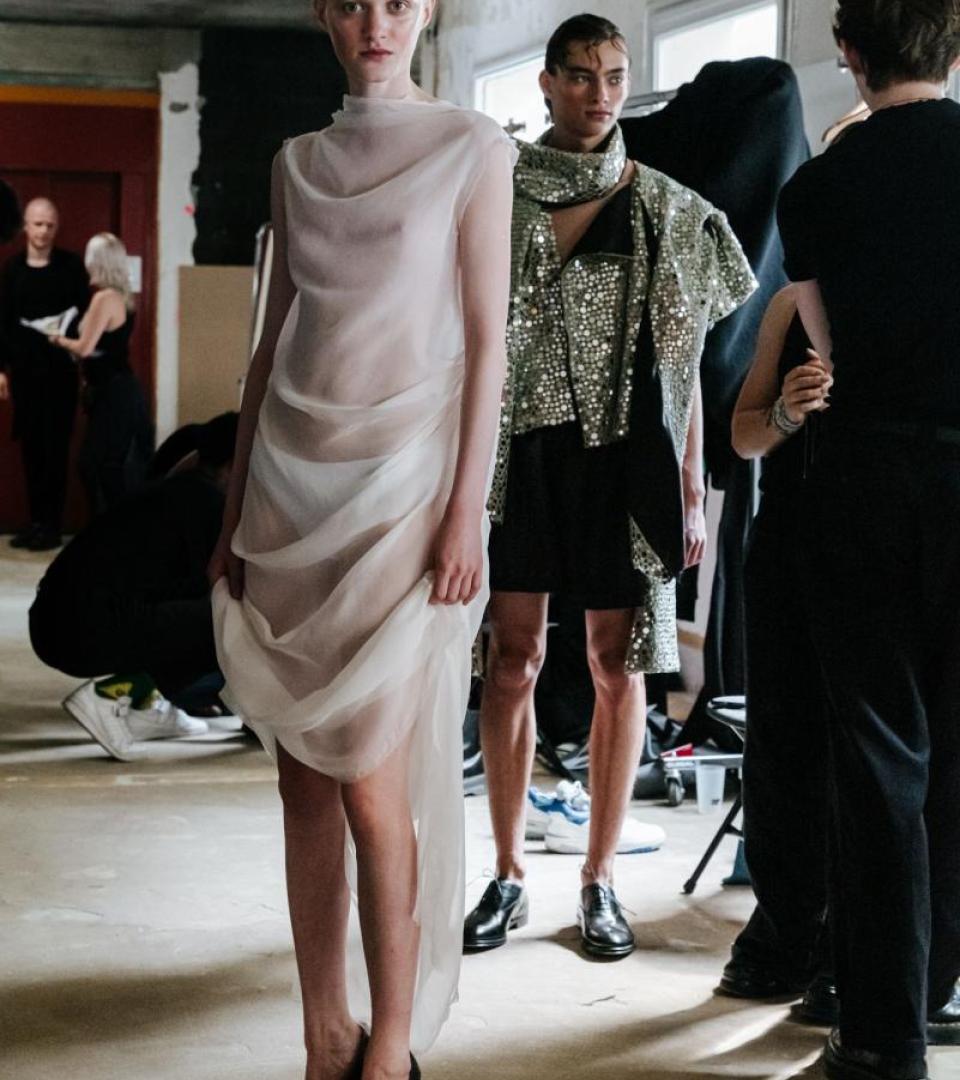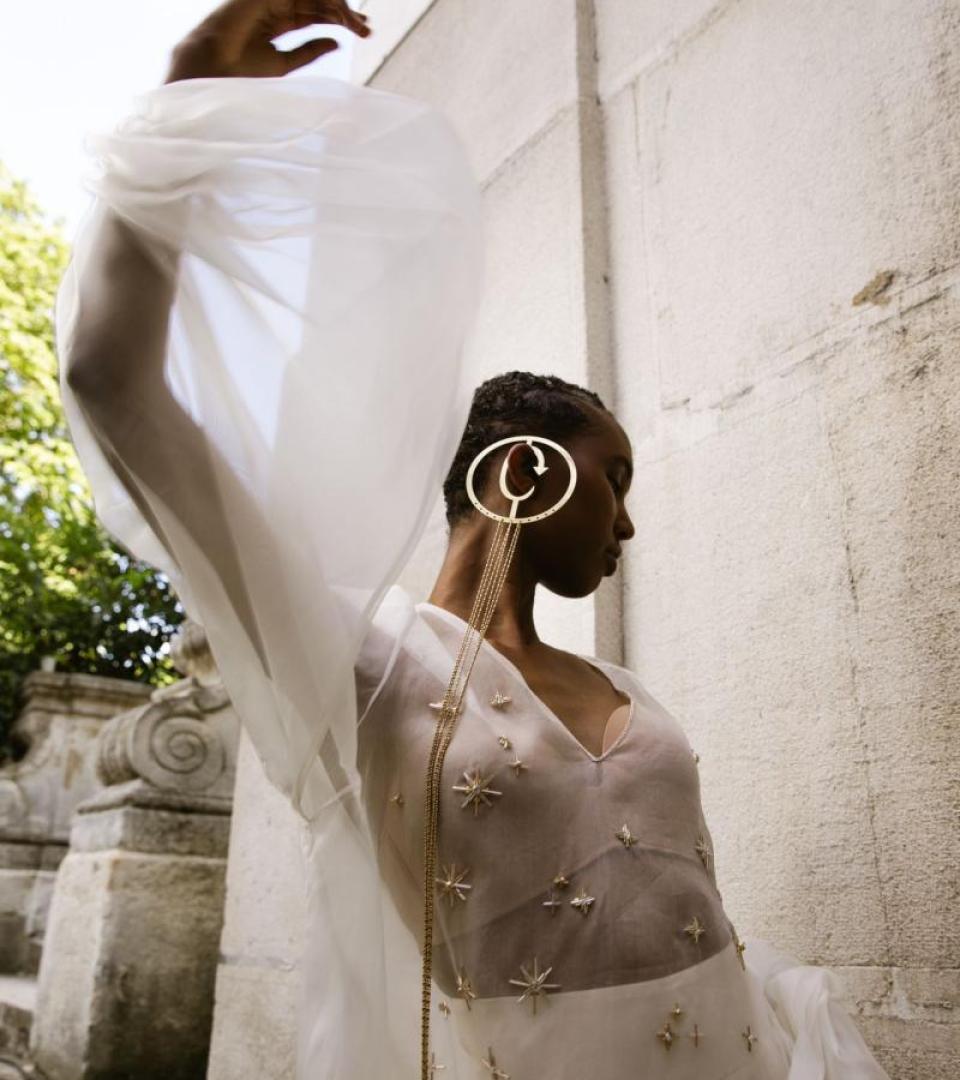Alain Paul: “I see clothing as an extension of the body and muscle.”
The House of ALAINPAUL explores the wardrobe of the dancer to create pieces that reconcile freedom of movement with sophistication for everyday wear. Founded in 2023, ALAINPAUL’s impressive rise is the fruit of a mature vision by its co-founders, Alain Paul and Luis Philippe, a seasoned duo who honed their skills alongside the greatest before setting off on their own.
Alain Paul, a trained dancer at the École Nationale Supérieure de Danse de Marseille – now home to the company (La)Horde – pivoted to fashion at the age of 18, stepping aside from the academic dance career he had been pursuing diligently since the age of 9. “The dance world is like a bubble; I followed it, but I was the most eccentric,” he recalls with a smile. “Fashion has always been a way of expressing myself and assuming who I am. I sewed my first clothes for performances... It was very spontaneous, a lot of styling.” This highly disciplinary training informs his work as a designer. “My collections are deeply linked to my background in dance. It's the DNA of the brand.” For him, clothing is no longer a simple garment, but a natural extension of the body’ movement. His third collection – and the first presented in the Official Calendar of Paris Fashion Week® – expresses “an awareness of the body, a freedom. I see clothing as an extension of the body and muscle.”
“I want to bring the dancer's wardrobe to the streets.”
The Spring-Summer 2025 collection, entitled ‘Impro,’ is inspired by the work of Merce Cunningham, a major American choreographer of the 20th century, a pioneer of contemporary dance, and visionary with an avant-garde spirit. “According to him, the creation of movement is spontaneous, free. Basically, the dancer’s wardrobe is made up of just a few piece: the leotard, tights and warm-up trousers,” Paul explains, adding that his clothes “must go with every body.” His collections mingle genders seamlessly. “It's a game. There's a reinterpretation of tapered trousers, in trench coats and knits. And lots of stretch fabrics. Noble fabrics, crepe, knitwear, that accompany the body with each step to create an emotion,” he says with the enthusiasm. What’s more, Merce Cunningham's choreography drawings have even been used in prints for this latest collection.
“It’s important for the audience to be on stage, to feel what it's like backstage, to experience the tension, to feel the light in their eyes.”
The ALAINPAUL fashion show will once again take place at the Théâtre du Châtelet. “We were looking for a big enough stage and the team was moved by our story.” For the creative director, there was no question of putting people in the audience versus on stage to ensure total immersion. Like a dancer focusing just before a performance... that stage fright, that dramatic tension. “I see the fashion show as a performance, as choreography,” he says. Last season, he went so far as to play “the sound of movement, of dancing shoes squeaking on the floor. It lasted two minutes before the show and it was very intense.” For the sound, the House works with Antwerp-based composer Senjan Jansen (Senstudio). “He understands where I want to take the crescendo of the show, the pause times, how to take us into a universe.”
“Virgil Abloh has been my greatest encounter, both artistically and on a human level.”
Paul’s first professional experiences were pivotal. He joined the House of VETEMENTS in 2014 under the artistic direction of Demna and the executive direction of Guram Gvasalia, and found himself in the front row of the brand's success, discovering the workings of an independent brand with a singular profile. This was followed by an unprecedented meeting with Virgil Abloh. When Marques'Almeida won the LVMH Prize in 2015, VETEMENTS and OFF-WHITE were among the finalists and Paul was there. “We celebrated with a losers‘ party in the VETEMENTS offices with OFF-WHITE,” he recalls. “It was an organic meeting with an extraordinary person.”
In 2018, Abloh was appointed head of Louis Vuitton's Men’s universe and Paul joined this creative profusion, which he would draw on for his own venture. “[Virgil] had an approach of saying that everything is possible, [yet] it was important to question everything.” He remembers the designer arriving at the atelier asking ‘What is tailoring today? What can we bring to it? What are blue jeans and white shirt?’ “I've always kept that in mind, always questioning the whys and hows.”
“I always knew deep down that I would create a House.”
The House of ALAINPAUL was created by four hands. Alain Paul at the creative helm, and Luis Philippe in charge of strategy. Philippe was Store Manager/Visual Merchandiser of the iconic (admittedly, an overused adjective, but here well-deserved) Colette concept store from 2015 to 2017. He then cultivated his eye, his knowledge and his network. “We had worked with Virgil Abloh several times. At Colette, we had a lot of preview launches,” he says. From then on, the projects followed one another in different Houses with varied profiles. Balenciaga, Alaïa, Sacai, Jacquemus: one learns by doing. At ALAINPAUL, they work hand in hand: ‘It's his vision, he choreographs the brand,’ Philippe says, looking at his partner with a smile. The osmosis here is crystal clear.
“Creative freedom doesn't mean we have to use raw edges.”
Technical excellence is key to bringing a creative vision to life: “I'm fascinated by craftsmanship, tailoring and impeccable cuts,” explains Paul, for whom the love of a job well done is second nature. The dancer’s disciplinary demands are clearly evident. One can only be creatively free when one masters the rules.
This notion of excellence is perfectly in keeping with the House’s commitment to sustainability. “When you invest in an ALAINPAUL piece, you aim to keep it for a long time,” the duo maintain, pointing out that they have been working with Nona Source, the resale platform for exceptional materials from the LVMH Group's Houses, since its inception. “The pieces are 100-percent wool and 100-percent cotton; we don’t want any mixes because it's much more complicated to recycle. We don’t want polyester either!” While the ecological transformation of the industry won’t be achieved overnight, it requires everyone to get involved on a daily basis, bit by bit. “The fashion world is turning like an oceanliner, and we’re trying to contribute to this movement,” says Philippe. “The ecological commitment is obvious when you create a new brand. It wouldn't make sense not to have one,” adds Paul.



